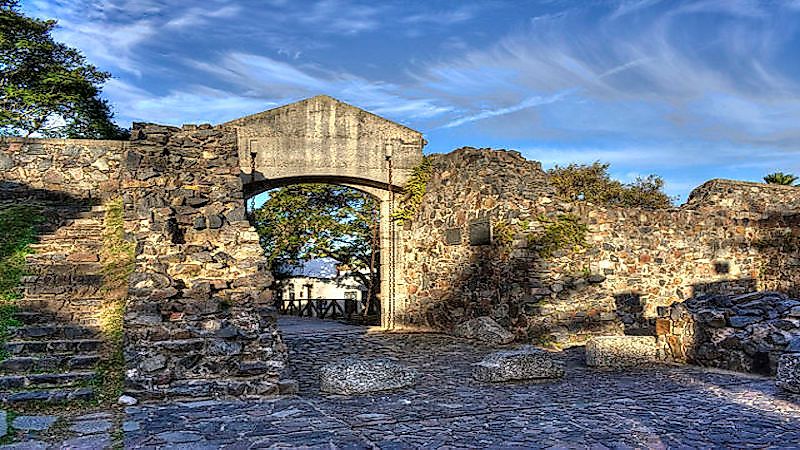UNESCO World Heritage Sites In Uruguay

Uruguay's two sites are in stark contrast, one a former meat processing site, the other a 17th Century Portuguese colony settlement site. The City of Colonia del Sacramento is recognized as a world cultural heritage site in the country. Fray Bentos Industrial Landscape, an Anglo meat packing plant became a legacy site due to the vital role it played during World War I and World War II. The City of Colonia was occupied by the Portuguese and Spanish for nearly 100 years. On the other hand, Fray Bentos meat processing site was a factory that fed Europe in the 19th and 20th century.
Historic Quarter Of The City of Colonia del Sacramento
Located on the southwestern edge of the Uruguay, the small quarter town of Colonia del Sacramento is the only world cultural heritage site in the country. The city on the northern shore of the Rio de la Plata sits on cobblestone roads and is accessible from Buenos Aires through a ferry. UNESCO named the city a world heritage site in 1995.
History Of The town
Founded in 1680 by the Japanese, Colonia underwent a series of successive occupations and destructive colonial wars by the Japanese and Spanish. The two maritime powers exchanged control over the town until 1820 when Brazil gained independence. As a result of the power swaps, the city became a fusion of Japanese and Spanish architectural design. In the 19th century artisans migrating in the country left their architectural design impact in the small town and today Colonia is a mixed heritage of the Japanese, Spanish, and the artisans’ immigrants.
Attractions In Colonia
The rustic lighthouse facing Buenos Aires is the first thing you see in Colonia. There is a spiraling staircase to take you to the top of Colonia where the lush landscape of the town is displayed all the way to the horizon. The newly restored City Gate, Porton de Campo, provides beautiful scenery with its stone pillars and wooden bridges. The Plaza de Toros Real de San is the largest attraction in Colonia.
Protection And Management
The whole layout of Colonia is listed as National Historic Monuments and benefit from the protection in the national law of 1971. Different organizations manage the historic sites. The ministry of education and culture maintains the integrity and authenticity of the town and the Honorary Executive Council maintain all sites and monuments in Colonia.
Fray Bentos Industrial Landscape And History
Fray Bentos is a port between two rivers, the Uruguay River to the West and the Rio Negro to the south.The strategic geographical position developed the town into a commercial and industrial hub. Port of Fray Bentos dates back to 1859. The 19th-century trades led to an influx of the social and political life of Rio de la Plata. When the saladeros the small and medium enterprises were established, a huge number of people migrated to the area to live in the port and the surrounding towns.
A German chemist, Justus von Liebig, moved to Uruguay in the 19th century and founded the meat processing plant called Liebig’s Extract Meat Company. By 1887 the plant had become the primary meat factory in the European countries to the point of having its district with houses, workers quarters, cleaning and garbage services, and hospital staff. In 1924 a British firm took over the plant the name changed to Anglo meat processing plant. The plant fed European soldiers in the two world wars with meat products like corned beef OXO bouillon cubes. The plant was huge with over 5000 workers maintaining the facility on a daily basis and processing over 4000 cows an hour and 2000 sheep in a day. In the late 19th and early 20th century, the factory was the largest and most advanced meat processing center in South America, but finally closed down in 1979. In 2015, UNESCO listed it as a world heritage site to honor its history. Today the site displays the whole chain of meat processing from meat sourcing, processing, packing and dispatching on a global scale.
Conclusion
The two sites attract thousands of tourists every year. The Colonia with its traversed drawbridges, a lush mix of cultures from Portugal and Spain, and Fray Bento's buildings and equipment provide a beautiful cultural heritage of the country. Increased real estate development and tourists’ numbers and reduced local population are the biggest problems threatening the Colonia and the meat plant. To counter these issues, a Conservation Plan is underway to preserve the plant because it has been listed as world heritage sites.
UNESCO World Heritage Sites In Uruguay
| UNESCO World Heritage Sites in Uruguay | Year of Inscription |
|---|---|
| Historic Quarter of the City of Colonia del Sacramento | 1995 |
| Fray Bentos Industrial Landscape | 2015 |











